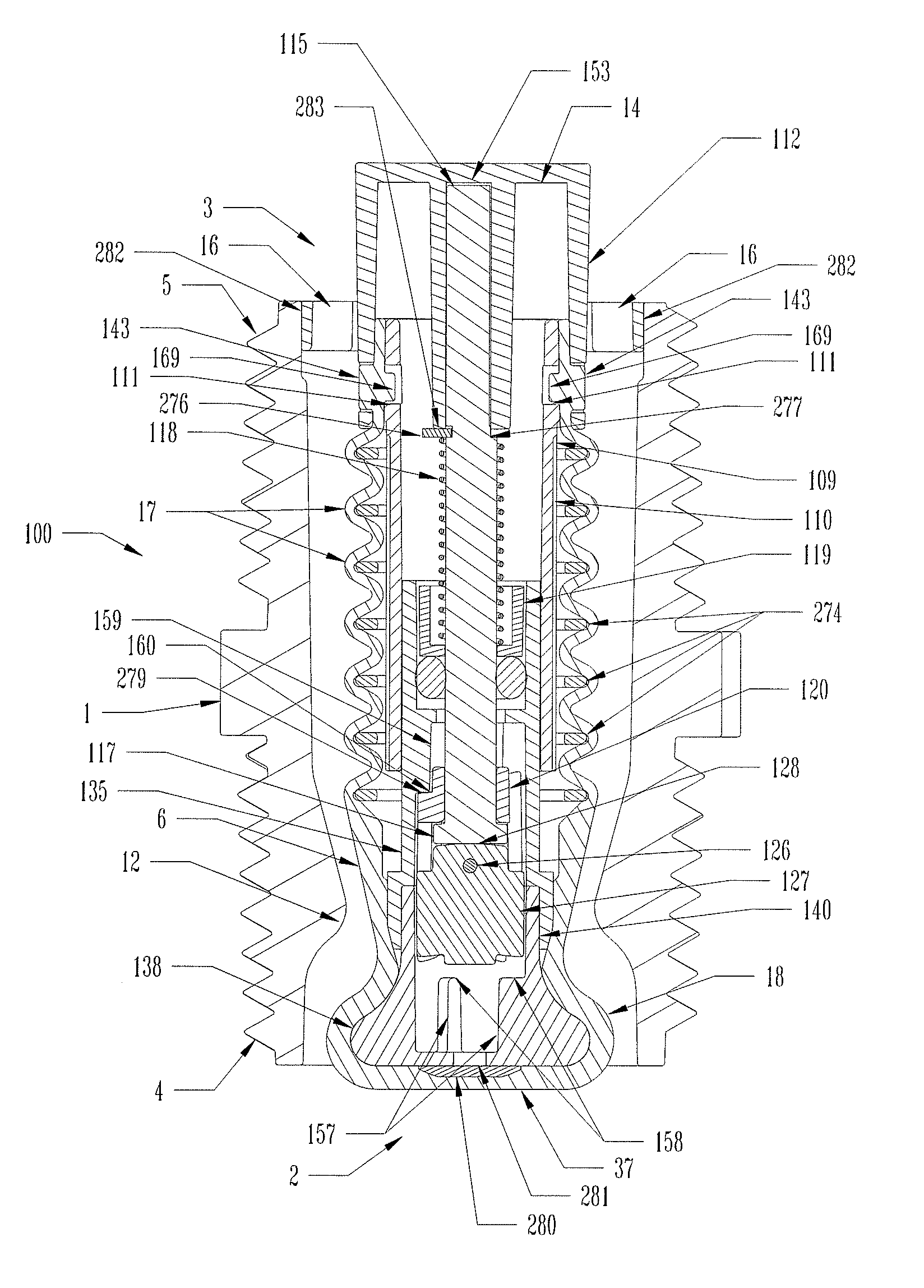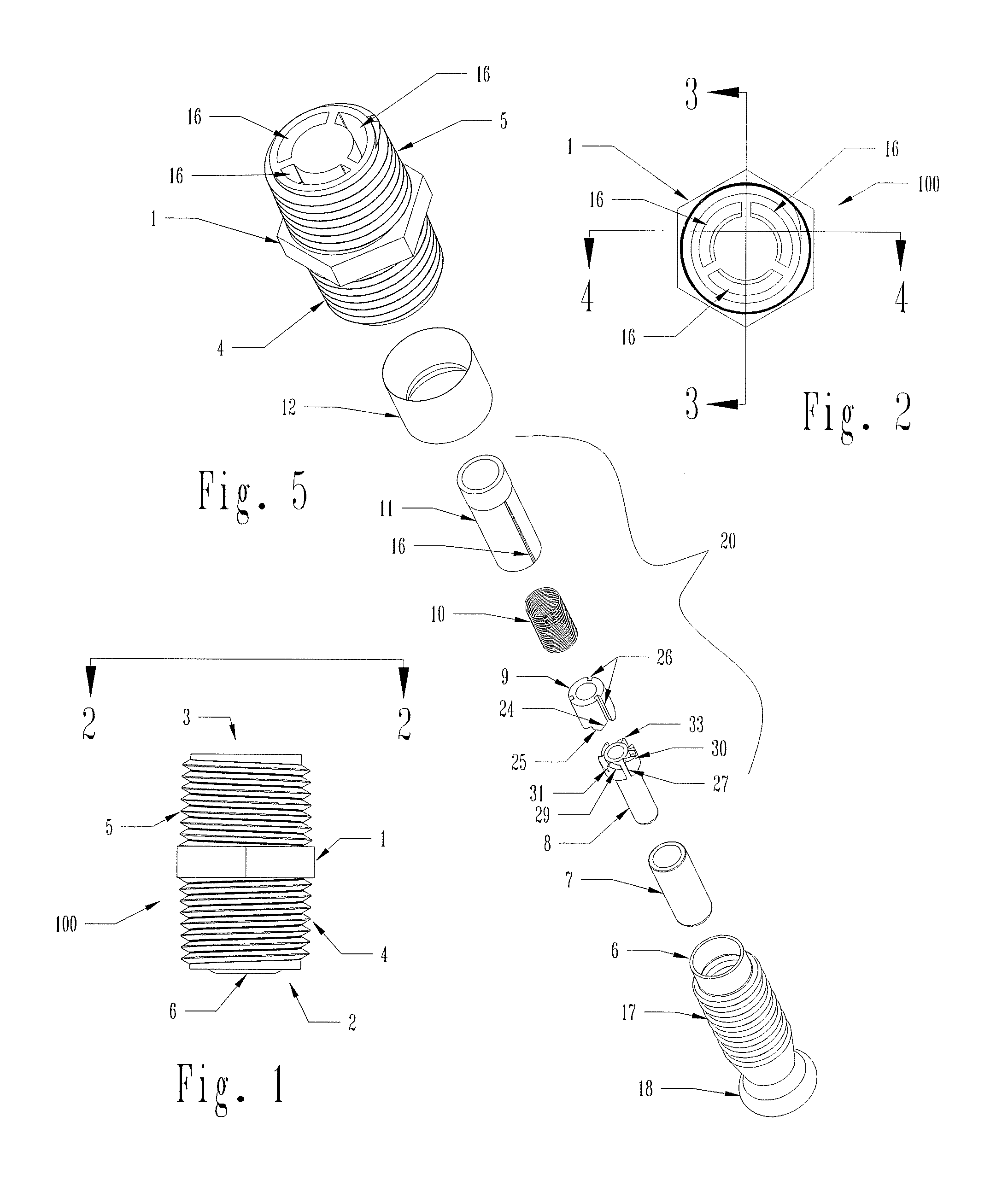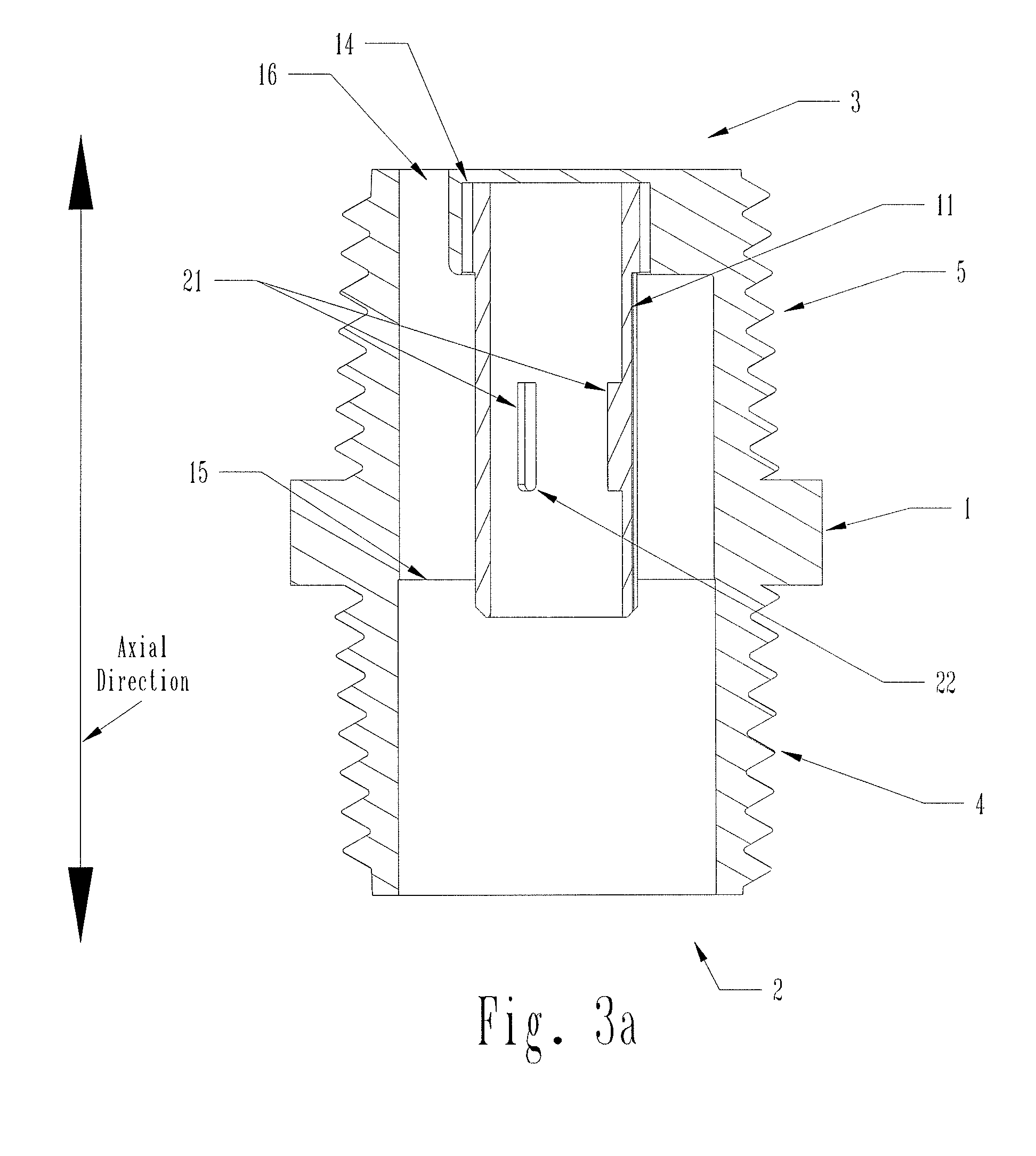Alternative state flow valve
a flow valve and alternative state technology, applied in the direction of valve sealing, spindle operation/release device, transportation and packaging, etc., can solve the problems of insufficient water distribution, insufficient spray distance, insufficient equilibrium pressure, etc., and achieve low cost, high fluid flow efficiency, economic advantage
- Summary
- Abstract
- Description
- Claims
- Application Information
AI Technical Summary
Benefits of technology
Problems solved by technology
Method used
Image
Examples
Embodiment Construction
[0076]The present invention provides a low cost and convenient solution to the problem of improving irrigation sprinkler coverage. Referring to FIG. 7, the threaded pipe nipple that commonly attaches each spray head 101 to a main supply conduit 102 is replaced with an alternating fluid flow valve 100 (alternating fluid flow apparatus). Each time the main supply conduit 102 is pressurized, each valve 100 assumes either an open free flowing state or a closed non-flowing state. If half of the valves 100 are open and half of the valves 100 are closed, then the total usage of the spray heads is one half. This provides a higher pressure and thus better spray distance. Each time the pressure is removed and restored, the valves 100 change state. Thus, the valves 100 that were previously closed become open and vice versa. By simply pressurizing the main supply conduit 102 twice rather than once, all spray heads are activated with high pressure and adequate distribution is attained.
[0077]In m...
PUM
 Login to View More
Login to View More Abstract
Description
Claims
Application Information
 Login to View More
Login to View More - R&D
- Intellectual Property
- Life Sciences
- Materials
- Tech Scout
- Unparalleled Data Quality
- Higher Quality Content
- 60% Fewer Hallucinations
Browse by: Latest US Patents, China's latest patents, Technical Efficacy Thesaurus, Application Domain, Technology Topic, Popular Technical Reports.
© 2025 PatSnap. All rights reserved.Legal|Privacy policy|Modern Slavery Act Transparency Statement|Sitemap|About US| Contact US: help@patsnap.com



